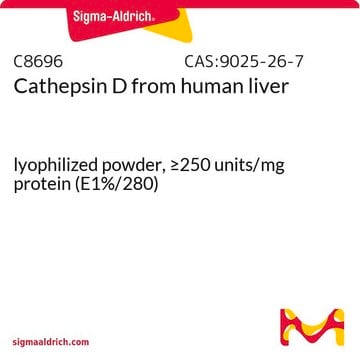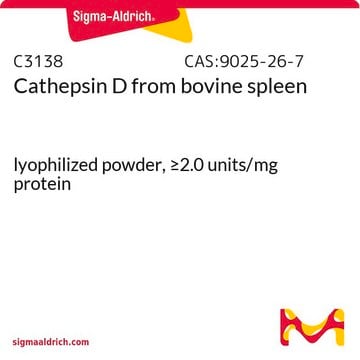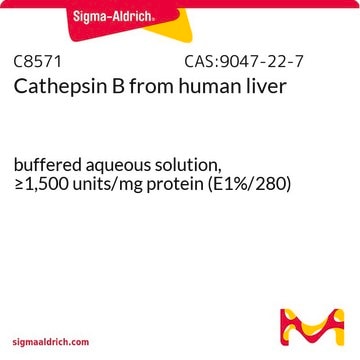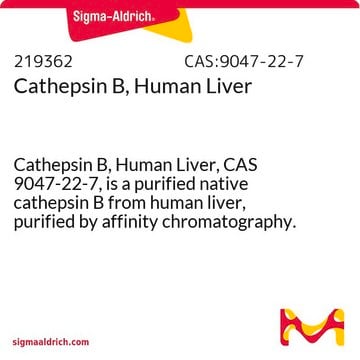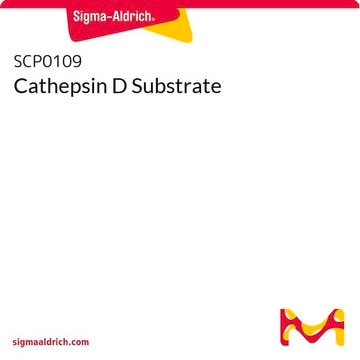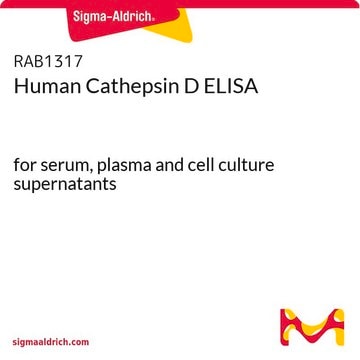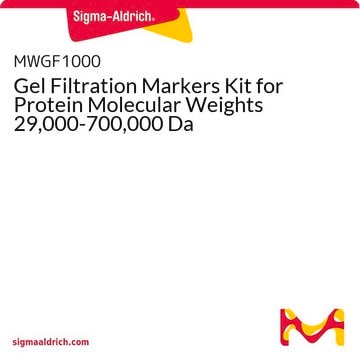SRP6415
Cathepsin D human
recombinant, expressed in HEK 293 cells, ≥95% (SDS-PAGE)
Synonym(s):
CLN10, CPSD, CTSD
About This Item
Recommended Products
biological source
human
recombinant
expressed in HEK 293 cells
tag
6-His tagged (C-terminus)
Assay
≥95% (SDS-PAGE)
form
lyophilized
mol wt
calculated mol wt 43.6 kDa
observed mol wt 45-55 kDa (DTT-reduced. Protein migrates due to glycosylation. Ser 19 is the predicted N-terminal.)
packaging
pkg of 10 μg
manufacturer/tradename
Sigma-Aldrich
storage condition
dry at room temperature
technique(s)
activity assay: suitable
impurities
<1 EU/μg endotoxin (LAL test)
suitability
suitable for molecular biology
UniProt accession no.
application(s)
life science and biopharma
shipped in
wet ice
storage temp.
−20°C
Gene Information
human ... CTSD(1509)
General description
Application
Biochem/physiol Actions
Physical form
Reconstitution
Storage Class Code
11 - Combustible Solids
WGK
WGK 3
Flash Point(F)
Not applicable
Flash Point(C)
Not applicable
Regulatory Listings
Regulatory Listings are mainly provided for chemical products. Only limited information can be provided here for non-chemical products. No entry means none of the components are listed. It is the user’s obligation to ensure the safe and legal use of the product.
JAN Code
SRP6415-10UG:
Certificates of Analysis (COA)
Search for Certificates of Analysis (COA) by entering the products Lot/Batch Number. Lot and Batch Numbers can be found on a product’s label following the words ‘Lot’ or ‘Batch’.
Already Own This Product?
Find documentation for the products that you have recently purchased in the Document Library.
Our team of scientists has experience in all areas of research including Life Science, Material Science, Chemical Synthesis, Chromatography, Analytical and many others.
Contact Technical Service